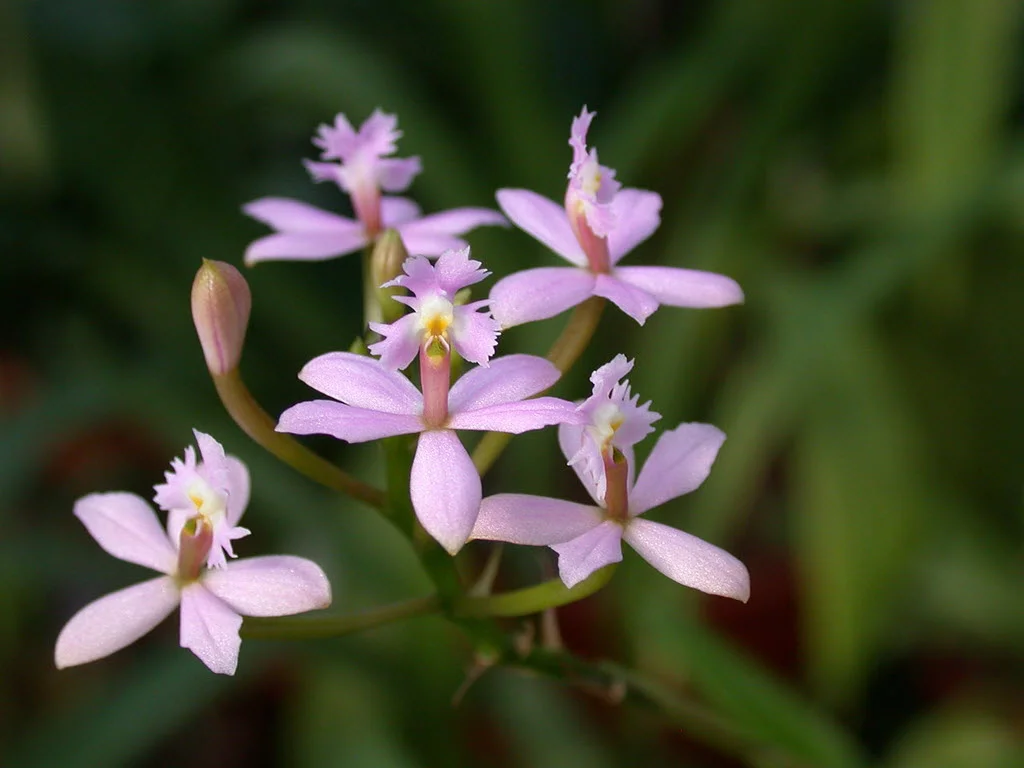Table of Contents
Pronunciation: en-SIK-lee-ah
Other Names: Cockleshell Orchids
Introduction
Encyclia orchids are are often compared to an octopus because of their dangling sepals and petals. Additionally, these flowers grow in long chains that hang down from the stem and come in a variety of bright, vibrant colors.
Encyclia Cordigera
This orchid ranges in size from two-inch flowers up to pseudobulbs that are the size of softballs with leaves that span up to two feet wide. They're native to Mexico, Florida, Central America, and South America (up to Argentina).
Temperature
The temperature requirements vary for this orchid, but most of them are comfortable with temperatures that range from 50°F to 80°F (0°C to 27°C) during the daytime hours. At night, temperatures can range from 10°F to 15°F (6°C to 8°C).
It is important to note that certain orchid species in this genus do better with cooler temperatures, and it's best to read up on your specific orchid species when you're trying to cultivate them.
Light
This orchid requires a large amount of bright, indirect sunlight. They grow very well in areas with screens overhead like in an enclosed porch or in a pool enclosure.
You can also place them by an east-facing window because this allows them to get the bright morning sunlight while avoiding the hot afternoon sun. If it gets too much sunlight, the leaves will get sunburnt.
Additionally, you can encourage your Encyclia to bloom by opening your east-facing window at night and allowing the cooler air to filter in and around your orchid. This practice will also allow them to cool down from the warmer daytime light exposure.
Water and Humidity
During their active growth period in the Spring and Summer months, water them three times a week during hot weather. During the cooler months, you can cut back to once or twice a week, and make sure that the roots aren't sitting in water because they can rot.
If you're not sure if you should water your orchid again or wait, test the soil. If you can stick your finger in the soil and it's dry one-inch down, it needs to be watered. If not, hold off on watering it. It's not picky about the humidity levels, and your humidity can range between 50% and 70%.
Feeding
Starting in the spring and continuing into the early fall months, fertilize your Encyclia orchids once a week, and flush it a few times between fertilizer applications to prevent buildup. During the winter months, fertilize your orchid once a month until you see new growth forming.
Your fertilizer depends on your potting medium. Potting mediums with tree fern and charcoal should have a 20-20-20 diluted fertilizer mix. A potting medium with fir bark does better with a 30-10-10 diluted fertilizer mix.
No matter what potting medium you use, dilute your fertilizer to half strength to prevent chemical burns.
Potting
These orchids do very well mounted on cork, or you can pot them in medium-sized clay pots. They also do very well in baskets if you can maintain their moisture and humidity levels. You want to use a fast-draining potting mix including fir bark, lava rock, river rocks, tree ferns, and sphagnum moss.
You can repot these orchids as often as they outgrow their pots as they don't mind being repotted and they tend to re-establish themselves quickly. It is best to repot them in the Spring when you see new growth starting.
Video
The Encyclia cordigera is a popular species amongst orchid growers. Miss Orchid Girl shares how it smells to her like dark chocolate or cocoa. Watch the video below to hear more about care tips.
Apart from chocolate, orchids can also smell like cinnamon, citrus, and even of rotting carcass. See our list of orchids and their distinctive fragrances. You can also browse through our comprehensive list of the different types of orchids.
See More Orchid Species











